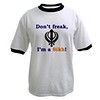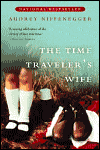Nocturnal Perambulations
I woke up today (or rather, yesterday) in an inexplicably great mood - my creative cycle coinciding with my circadian rhythm for a change.
Cut to 4 weeks ago. Fresh with a Narcissus-inspired [related post] need for artistic self-actualization, I scoured Atlanta’s share of the World Wide Web for creative outlets. Since my only redeeming imaginative skill lies in photography (other than stochastic optimization model – though those don’t tend to have as wide an audience :), I hunted down local art galleries.
One of these, Tula Art Gallery, was a few blocks away from my house, and had an exhibition coming up, for which they were seeking participation. Brimming with naïve optimism, encouraged by friends, and guided by mentors, I enthusiastically submitted two of my pictures from India [pic 1 and pic 2].
Since my photo printer at home was not working, I used a custom print shop in New York. Disappointed at the results, I got them printed again, and again. I suppose I was trying to eke out megapixels depth where none existed. These were old pics, with old cameras, and they just didn’t print that well. The submission deadline approached, so I decided to make do with my third iteration, elegantly (and expensively) framed.
I found out two days ago that my carefully had not been accepted. Today, as I went to pick up my submission from the art center, the great mood struck. I struck back. A violent struggle ensued.
The result:



I rounded out the day with chaat at Madras Sarvana Bhavan; Tim Burton’s Corpse Bride (awesome faux-claymation animation, ho-hum plot) at Regal 24; and Salsa/merengue at Loca Luna.
At three in the morning, though, sleep was a distant dream. I decided to continue my photo-perambulations at Atlantic Station on 17th street. A short drive, long walk, quick security-men dodge and lots of clicks later:



[Entire Photo set]
It has been an entertaining day.
Cut to 4 weeks ago. Fresh with a Narcissus-inspired [related post] need for artistic self-actualization, I scoured Atlanta’s share of the World Wide Web for creative outlets. Since my only redeeming imaginative skill lies in photography (other than stochastic optimization model – though those don’t tend to have as wide an audience :), I hunted down local art galleries.
One of these, Tula Art Gallery, was a few blocks away from my house, and had an exhibition coming up, for which they were seeking participation. Brimming with naïve optimism, encouraged by friends, and guided by mentors, I enthusiastically submitted two of my pictures from India [pic 1 and pic 2].
Since my photo printer at home was not working, I used a custom print shop in New York. Disappointed at the results, I got them printed again, and again. I suppose I was trying to eke out megapixels depth where none existed. These were old pics, with old cameras, and they just didn’t print that well. The submission deadline approached, so I decided to make do with my third iteration, elegantly (and expensively) framed.
I found out two days ago that my carefully had not been accepted. Today, as I went to pick up my submission from the art center, the great mood struck. I struck back. A violent struggle ensued.
The result:



I rounded out the day with chaat at Madras Sarvana Bhavan; Tim Burton’s Corpse Bride (awesome faux-claymation animation, ho-hum plot) at Regal 24; and Salsa/merengue at Loca Luna.
At three in the morning, though, sleep was a distant dream. I decided to continue my photo-perambulations at Atlantic Station on 17th street. A short drive, long walk, quick security-men dodge and lots of clicks later:



[Entire Photo set]
It has been an entertaining day.












